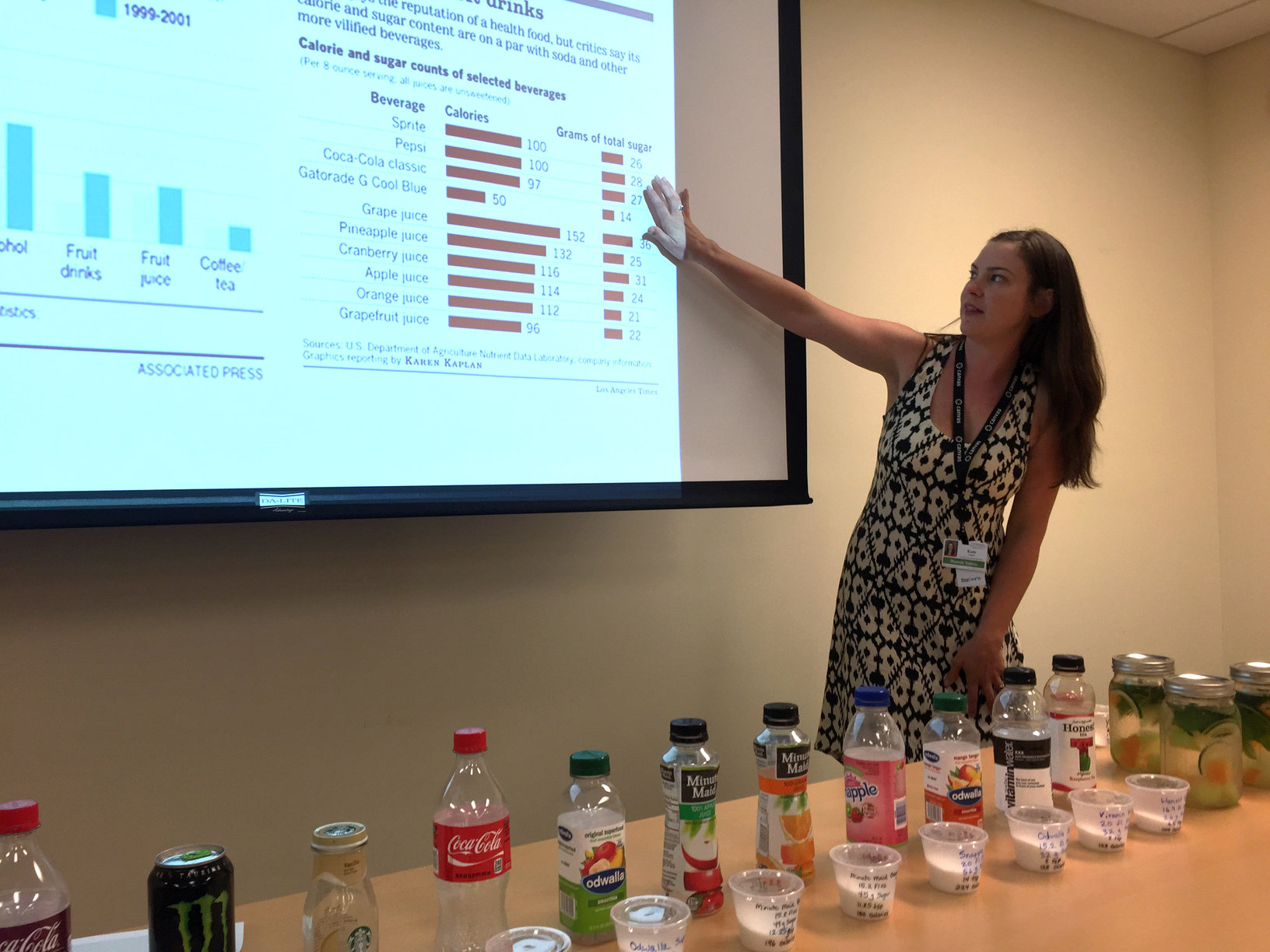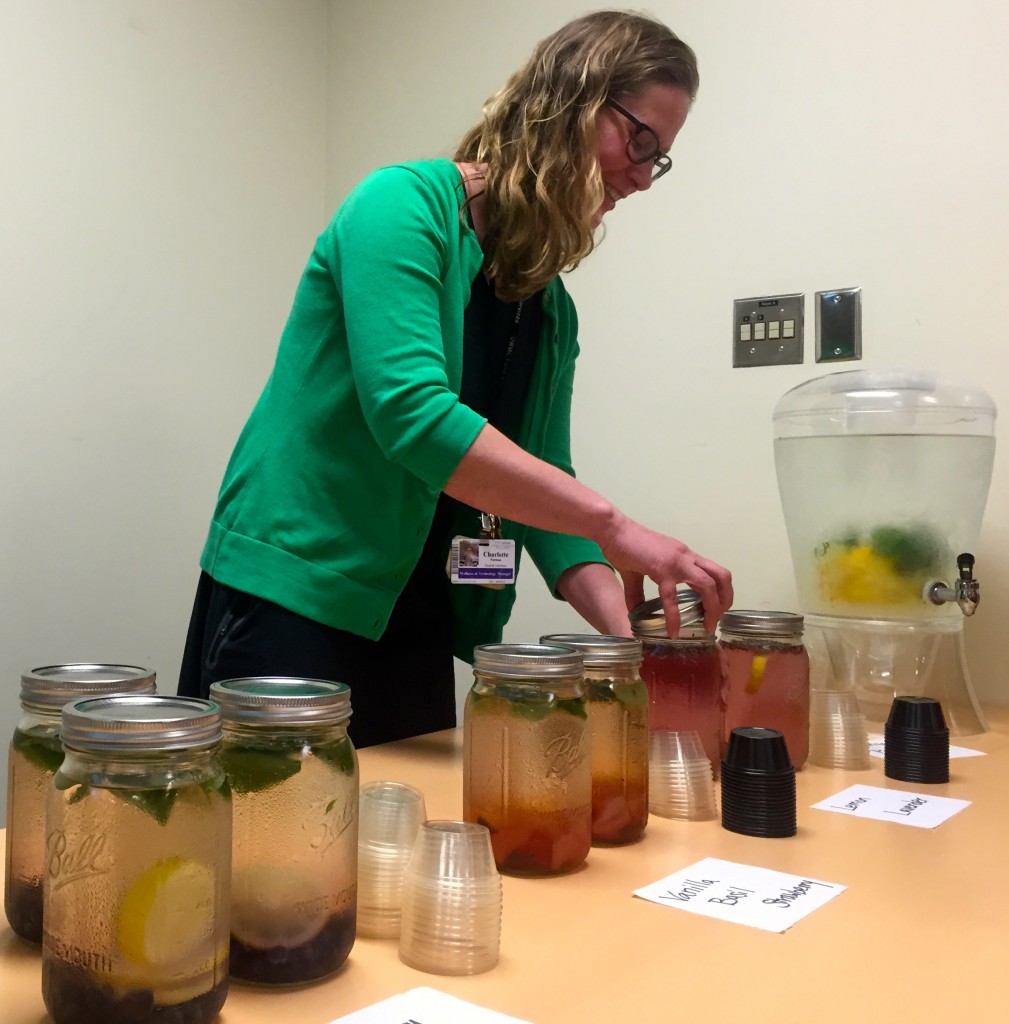
How to Avoid Hidden Sugars
How much sugar is really in our drinks? Last week, Kate Ueland, dietetic intern at UW Medical Center, gave a Whole U seminar on the importance of limiting the consumption of added sugars in drinks. Prolonged intake of sugary beverages may be a key contributor to the epidemic of overweight and obesity and increases the risk of developing chronic diseases such as Type 2 Diabetes, hypertension, stroke, and atherosclerosis.
“The American Heart Association recommendation that sugar consumption for adult women is no more than six teaspoons of added sugars per day. For men, it is no more than nine teaspoons of added sugars per day,” says Kate. “Americans are consuming 23 teaspoons of added sugars per day, an average of 385 calories daily. To burn those calories you would have to either walk for 90 minutes, play basketball for an hour, or bike or jog 45 minutes.”
“The biggest contributors to sugar consumption are regular soft drinks. According to the Center for Science in the Public Interest, in 2010 sugary drinks were the single-largest source of calories in the American diet, providing an average of about 7% of total calories per person.” One 20 oz. bottle of soda can contain up to 70 grams of sugar, about 17 teaspoons or 13% of total calorie intake per day!
Sodas are not the only bad guys here. Sugar sweetened beverages are defined as any beverage that contains at least 50 calories per serving. These include sodas, fruit drinks, coffee drinks, sports drinks, energy drinks, and homemade drinks.
“The problem with sugary drinks is that our bodies don’t recognize calories from a liquid source and therefore still tell the brain we are hungry even though we just consumed calories. This becomes problematic when you are consuming these calories throughout the day and not accounting for them. Over time these calories from beverages add up and can contribute to weight gain. It takes consuming an additional 250 calories a day to gain a 1/2 pound a week.”
When we asked Kate about 100% fruit juices and smoothies that contain no added sugars, she warned that, “while there are no reported added sugars in those beverages, you still have to consider the calories that they are adding to your diet. Because there is virtually no fiber in those juices, the natural sugars from the fruit in the juices or smoothies will be absorbed really quickly into your blood, causing a spike in blood sugars that you wouldn’t get if you consumed the whole fruit instead. Fiber, which is more abundant in whole fruit, helps to slow down the rate of nutrient absorption thus helping to reduce the amount of sugar that you absorb.”
Check out Kate’s tips for reducing sugar consumption:
- Find the Grams per Serving
- One teaspoon of sugar equals 4 grams
- Avoid Firsts on the Label
- If added sugars are listed as the top ingredient(s) in a food or if several different kinds of sugar are in the list, this is likely a food loaded with sugar
- Manage Your Sweet Tooth
- Keep the amounts small
- Try satisfying your sweet tooth with whole fruit
- Reduce Your Sugary Drinks
- Substitution ideas include sparkling waters with a splash of fruit juice, no-calorie sodas, unsweetened (or lightly sweetened) tea or coffee. And water is always a good choice.
If you get bored of water, try infusing it with fruit, vegetables, herbs, and spices. Kate put together some tips and recipes for how to make healthy and delicious drinks that we call Drinks in a Jar. Click here to register for the printable PDF.
Kate Ueland has her Master’s in nutrition from Bastyr University. Currently Kate is teaching nutrition at North Seattle Community College and is also completing her dietetic internship at UW Medical Center to become a registered dietitian.

